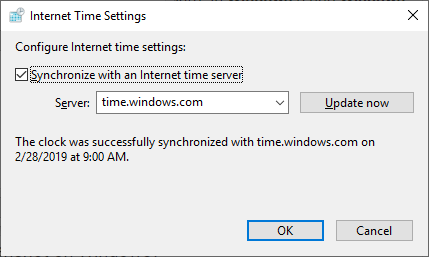The old saying that timing is everything applies to many facets of life. Sports, comedy, etc. But it also plays a critical role in Amateur Radio. We all know about the use of UTC to avoid issues of time zones for Hams spread around the world. But precise timing is critical for some of the newer digital modes like FT8.
Recently I fired up my rig and started WSJT-X. To my surprise all of the received transmissions showed a DT (time differential) value of 1.5 or more! Seeing a large DT is not uncommon for a random station here and there. But if all of the DTs you’re seeing are more than a second then YOU are the problem, not the other way around. A high DT value can lower your station’s ability to properly decode signals and make contacts.
My Windows 10 machine was set up to sync with the time.windows.com Internet time server. This had never been a problem before. Maybe it skipped a resync? I pressed the “Update now” button and thought I was done.

But WSJT-X was still showing large DT values. I restarted WSJT-X. The same. I updated the time sync again. More of the same. I changed the Internet time server to be time.nist.gov. No change. I rebooted the machine. Second verse same as the first. I changed back to using time.windows.com and updated again. Fingers crossed.

Finally, most receptions now reported DT values of a fraction of a second!
Note that the band activity above was successfully decoding only a single station in each 15 second time slice (circled in red). When the time sync succeeded it immediately started decoding many more.
The moral of the story is to always keep an eye on your DT values. It’s not just window dressing. It can be a critical factor into whether or not you’re able to make contacts with modes like FT8.
on my ft8 in the recv windo, i see my call but show nothing under DT should i see that…
Willie,
You won’t see a DT on lines with your call, only on other lines. The DT is the time difference between yourself and the other station. So a DT between your station and your station will always be zero! 🙂 Getting the DT as close to 0.00 as possible ensures that your station and the others are closely aligned and thus spend most of the 15 second transmit window proper decoding signals.